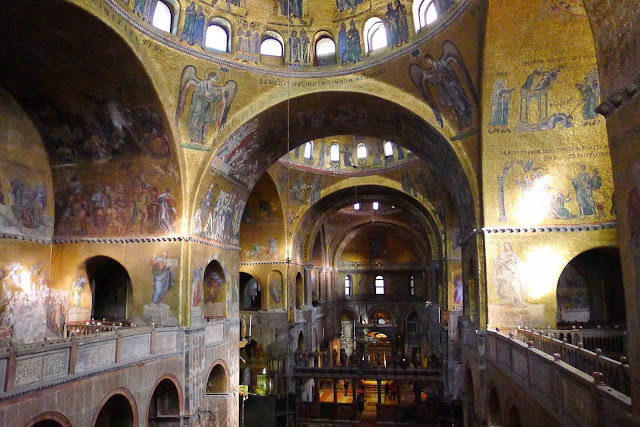San Agustin Church and the Beauty of Old Manila
While Metro Manila may be world class when it comes to shopping malls, entertainment facilities, restaurants, bars, clubs and bargain shopping, its choices of cultural attractions is, unfortunately, very limited. Partly its because of the national government's limited support for our historical sites or maybe its because our people themselves do not really value our cultural and historical heritage, preferring instead Western influences.
Nonetheless, I am extremely proud that we more or less have the ancient walled city of Intramuros to get our nationalistic fix in, as well as to showcase to our balikbayans and foreign guests who want to catch a glimpse of our history. And at the center of this walled city is my favorite church in the country, the San Agustin Church.
* Built in 1571 by members of the Order of St. Augustine, the San Agustin Church was the first religious structure built by the Spaniards in the island of Luzon.
* The current structure is actually the third Augustinian church erected on the site. The first two structures, made of bamboo and nipa, were both destroyed by fires: the first during the invasion of Manila by Chinese pirates, and the second during a funeral of a high-ranking Spanish official. It was then that the friars decided to rebuild using stone instead of wood.
* Due to its central location and prominence in the ancient walled city of Intramuros (the actual ancient city of Manila back in the Spanish period), San Agustin has played host to many important events in Philippine history. The Church was where the Spaniards surrendered to the Americans after the Spanish-American War. During WWII, San Agustin was turned into a concentration camp for American and Filipino prisoners, and in fact was the only standing building in all of Intramuros after the Battle of Manila in 1945.
* While the church itself is a working church with hourly masses during Sundays, the monastery right beside has become a museum showcasing over 400 years of Philippine religious and colonial history.
* With hundreds of religious figures, paintings and murals, the museum is an ideal area for reflection and historical appreciation. The cloisters here even remind me of the ones at the Barcelona Cathedral!
* The crypt actually contains the remains of several Filipino national heroes, including that of Juan Luna, one of the greatest painters our country has ever produced. The memorial on the right marks the spot where the the Japanese executed Filipino clergymen, prisoners and ordinary citizens during the darkest hours of the Battle of Manila.
* Easily one of the creepiest parts of this museum is this room full of antique religious figures. Don't let the camera shots fool you, this place was dark and dreary!
* Some of the items found therein are saints clutching skulls (upper left), saints just plain giving up (lower right), Jesus bloodied and beaten (lower left) and saints with knives stuck on their heads... (upper right).
* Well it probably didn't help that I was the only one in here at the moment!
* Father Manuel Blanco was an Augustinian friar who built a vast garden behind San Agustin, filled it with all sorts of plants native to the country, and published a book titled, Flora de Filipinas, a complete guide to the flora and fauna of the Philippines!
* Some other items found within the museum include a collection of Flores de Mayo floats (upper left), Jesus in complete thought (upper right), replicas of Spanish Galleons (lower left) and some random statues, like this saint with his pal (lower right).
* Easily one of the more impressive parts of the museum is this stone staircase heading up the second floor. This place just screams Medieval Europe!
* The monastery also contains replicas of ancient Spanish government offices (upper left), paintings of various religious scenes and depictions of everyday life (upper right, lower left) and a collection of ancient Chinese vases.
* My two favorite creepy paintings, however, have to be this poor soul getting impaled (left) and this very intense lady giving us the Ghostbusters II heebie-jeebies (right).
* The highlight of the second floor is this giant bamboo organ also with giant song and piano books! They must have had an ogre playing for them back then to demand this size.
* The courtyard in the middle of the cloisters offers yet another place for meditation and soul-searching. God I love this place!
* While the museum monastery is open to the public the whole day, the church can only be explored in the lull between masses.
* Which I recommend everyone do as the church itself also offers multiple points of interest including: its very beautiful altar (top), old-school Catholic pulpit (bottom right) and the burial plots of some of the Philippines' richest families (bottom left).
* Exploring further down towards the altar brings us to the Easter Egg of the whole Church! Towards the left of the altar lies a room containing the sarcophagus of Miguel Lopez de Legazpi, the Spanish Conquistador who conquered the Philippines for the King of Spain, Philip II, and was the first Governor-General of the Spanish East Indies.
* Outside the Church grounds, there is a continuing effort to rehabilitate the ancient walled city in the hopes that we as Filipinos will remember that Manila was once so beautiful that she was referred to as the "Paris of the East".
* Finally, I have to share this statue of a gentleman really rocking the conquistador look! Check out his epic hat.

























Comments
Post a Comment